Mikrolimano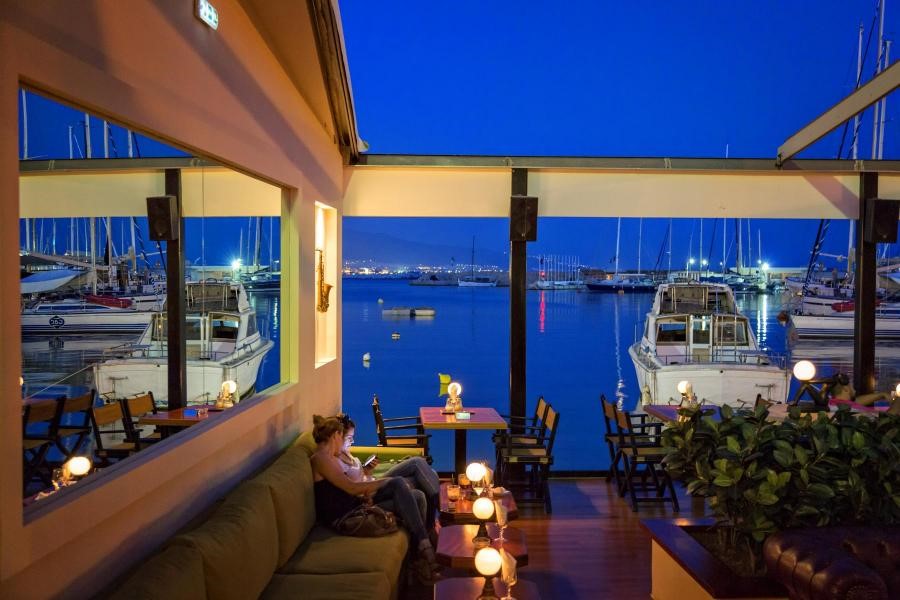
It has an oval shape and many names: Mikrolimano, Fanari, Tourkolimano, Koumoundourou port. In ancient times, however, it had only one: Port Mounichia. It belongs to the district of Castella, with which it is connected by the steep streets with modern cafés and bars. It was given the name Fanari during the Byzantine period, probably because there was a lighthouse (fanos) at its entrance.
It was called Koumoundourou port because of the namesake mansion that existed in its south end, where the Nautical Club of Greece stands today. It was given the name Tourkolimano during the revolution period, in 1821. Mikrolimano is one of the finest points of Piraeus with many dining and entertainment options. The enclosed bay is crowned by amphitheatrically built homes. The moored boats and the fishing boats swaying gently, the restaurants and cafes, the titillating scents of meze, the people enjoying a walk along the waterfront, are reminiscent Aegean island. The traffic here lasts until late in the evening as dozens of people enjoy a drink or cocktail in the lounge bars and café bars overlooking the sea.
In Koumoundourou coast you will also find some of the best fish taverns and restaurants of Piraeus, which are famous throughout Attica. Sitting on the wooden decks next to the water, enjoying the music, you will enjoy fresh fish, seafood, appetizers, ouzo and fine wines. Most locals have fond memories of this picturesque harbor, which over time has been remodeled and became a cosmopolitan destination for all
hours of the day. A social and happy place where summer seems to last forever!
Info
In ancient times, along with the other two ports of Piraeus, Zea and central, Mounichia port was considered the war port of Athens and they had even built a wall to protect the port facilities. It had jetties with an opening of 37 meters and at their ends towers were that were the continuation of the walling of Piraeus. It had 82 ship sheds and docks.
Municipal Theatre
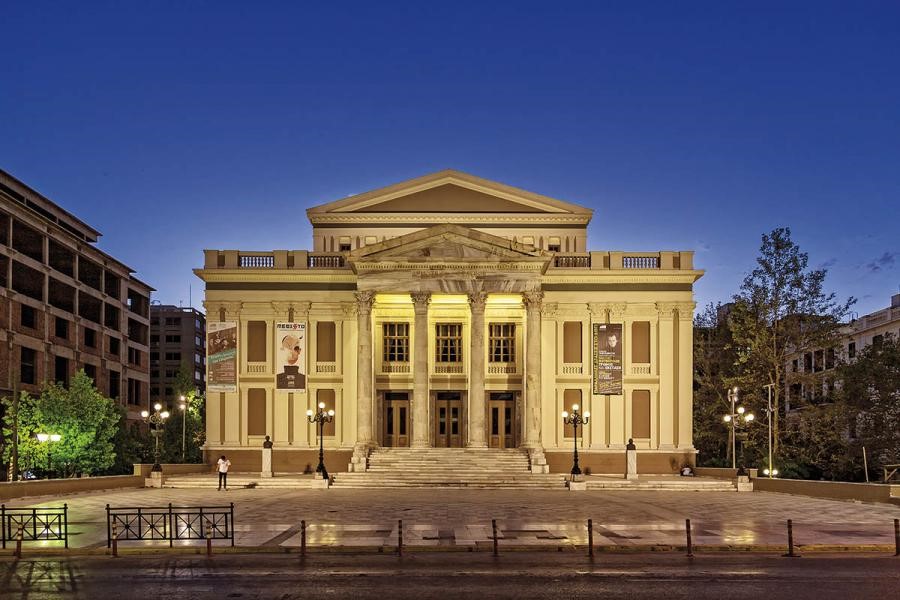
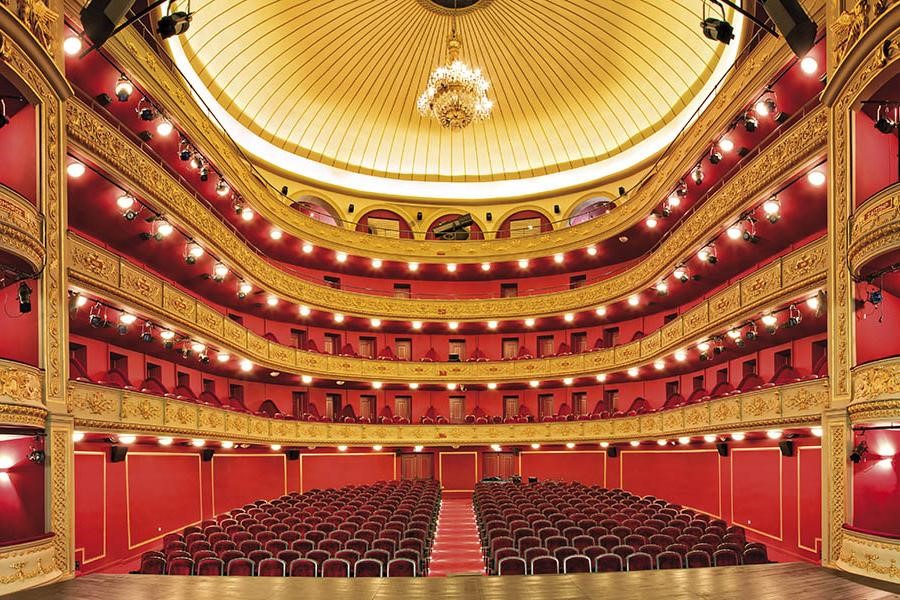
The Municipal Theater is a landmark of the city of Piraeus. It was founded in 1884, according to designs of the architect Ioannis Lazarimos. Its construction took 10 years and it started operating in 1895. It is considered the most important neoclassical building in the city and one of the most important theaters of the country. Many famous Greek directors, such as Karolos Koun, Alexis Solomos, Dimitris Rondiris, Spyros Evaggelatos, have presented their work there. The establishment of the Municipal Theatre of Piraeus expressed the vision of the emerging bourgeoisie and the intellectuals of that time to designate the city as a cultural international centre. Its internal layout followed the standard of the “Theatre d 'Odeon” Paris.
Its main stage is in baroque style, while the square of the theater could accommodate up to 1,300 spectators. In 2008 renovation works began which brought out all of the ornate details of the ceiling. The renovated Municipal theater started its operation during October 2013. Since then the viewers can enjoy an interesting program including theatrical plays, concerts, exhibitions, interactive theater, educational programs and many more.
Info
The theater is located at 34 Iroon Polytechniou Str.
Tel.: +30 210 4194560
https://www.dithepi.gr/en/thetheater
Coast of Zea
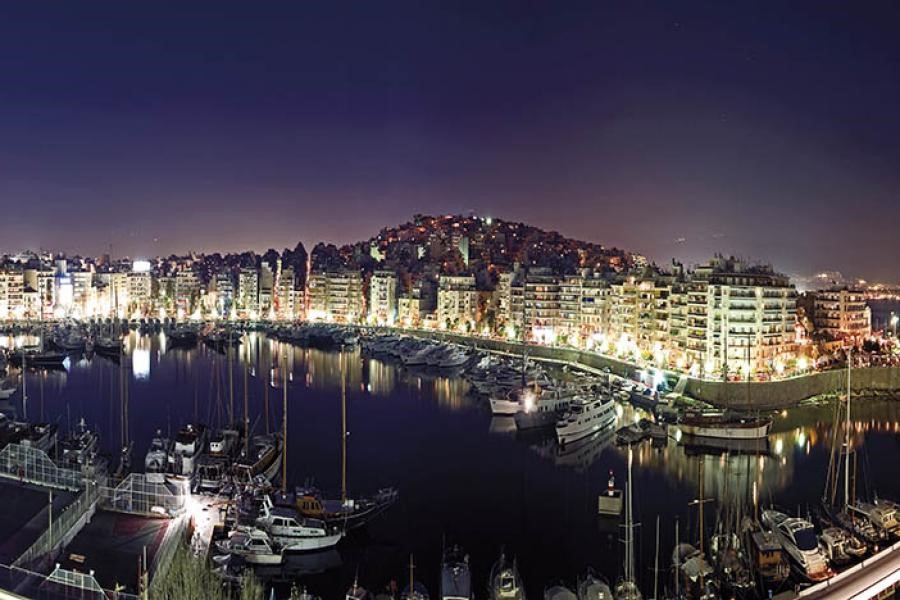
The ancient port of Zea, which hosted the symbol of sovereignty of the Athenian state, its great fleet, is the present Pasalimani. The name Pasalimani was established because during the Turkish occupation, pashas of Athens came here along with their harems for swimming. The access to the coast for Christians was prohibited. Zea is the second largest of the three ports of Piraeus. There are still historical cafés here, from a time when the high society of Piraeus went every afternoon for a walk with their children, nannies and dogs. The most historic team in Greek football, Olympiacos, was founded as a club in the café Kyveleia, in Pasalimani, which no longer exists. The older residents of Piraeus didn’t say: “Olympiacos plays with Panathinaikos”, the eternal opponent team of Olympiacos, but they said: “The Champion plays with Panathinaikos”. In the west side there is Zea Marina, which was built by the Piraeus Port Authority, in 1955. At Moutsopoulou coast, where Kaniggos street meets Sirangiou street, you will see the Tzivanioti villa, known as “the house with palm trees”. It is of stone, in neo-Gothic style and built in the late 19th century. Very close to the villa there have been survived interesting ruins of ancient shipyards. Pasalimani ends at the east on a hill, the top of which has formed a square called Alexandras. Certain cafés here offer panoramic view of the urban complex of Athens.
Info
In Pasalimani there are many cafés and restaurants, most of which offer wonderful view to the Saronic Gulf and Zea Marina. On the eastern side of the bay you can see a part the ancient walls.
Stavros Niarchos Foundation Cultural Center
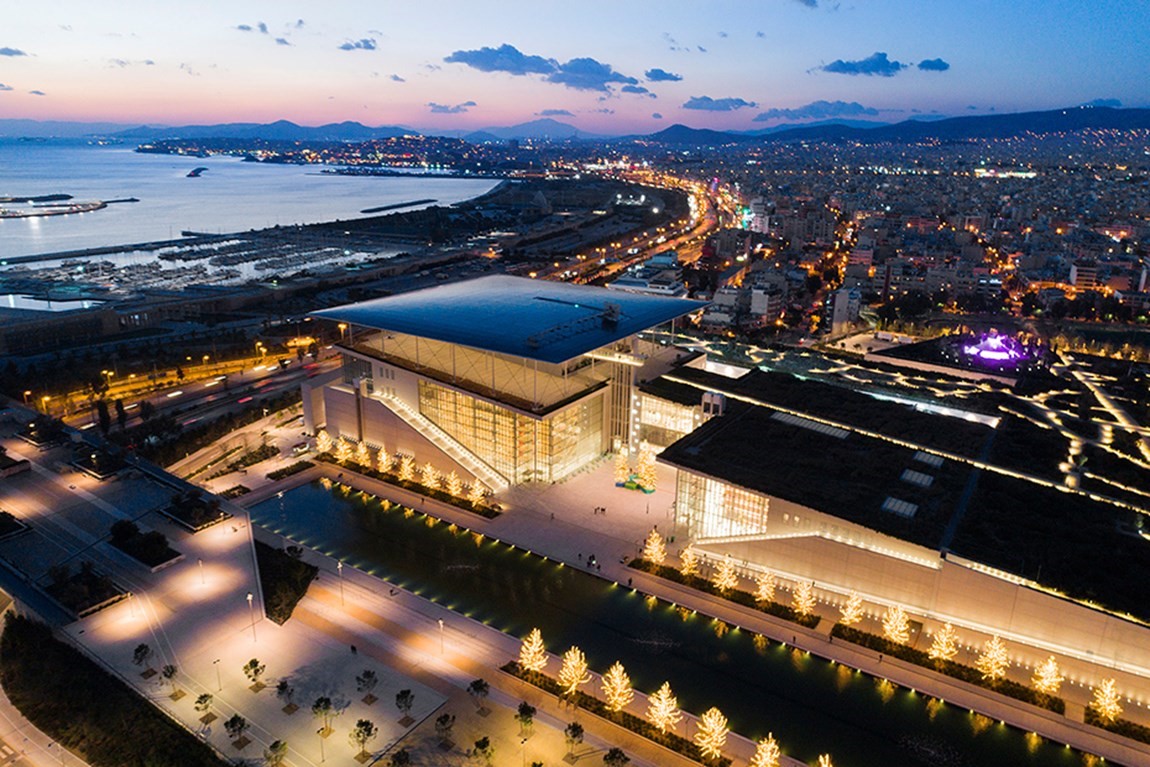
A public space, where everyone has free access and can participate in a multitude of cultural, educational, athletic, environmental and recreational activities and events. It includes the Greek National Opera, the National Library of Greece as well as the Stavros Niarchos Park, one of the largest green areas in Athens, covering 21 hectares. The SNFCC was created thanks to an exclusive grant by the Stavros Niarchos Foundation, which delivered it to the Greek State upon completion. SNFCC Single Member S.A. is a public-benefit nonprofit organization responsible for the operation, maintenance and management of the Stavros Niarchos Foundation Cultural Center and the Stavros Niarchos Park while developing and organizing its own series of cultural, educational, environmental and sports activities. It is supervised by the Greek Ministry of Finance.
Flisvos Marina
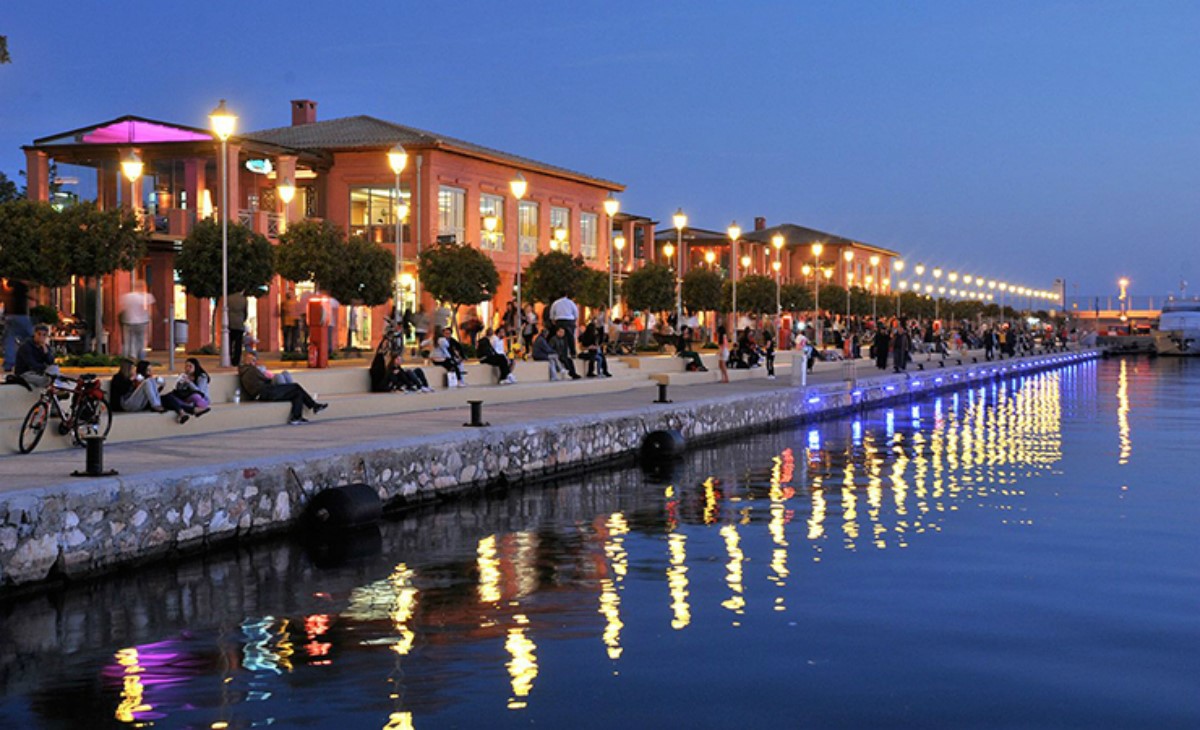
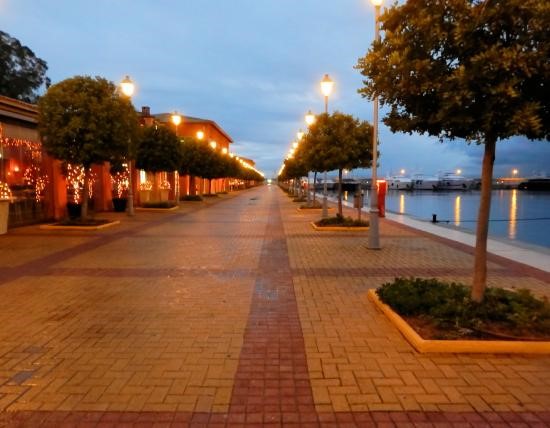
Only 6 km from the centre of Athens, in Paleo Faliro, Flisvos Marina is Greece’s first exclusive marina to offer large-scale mooring capacity for mega-yacht owners from Greece and abroad. The marina features 303 berths, more than half of which accommodate luxury yachts of over 35 meters.
A commercial complex, that stretches across 3,800 sq.m, features a majestic Mediterranean esplanade lined with fine dining and shopping venues as well as a roster of special events throughout the calendar year for yacht owners and visitors alike.
Castella
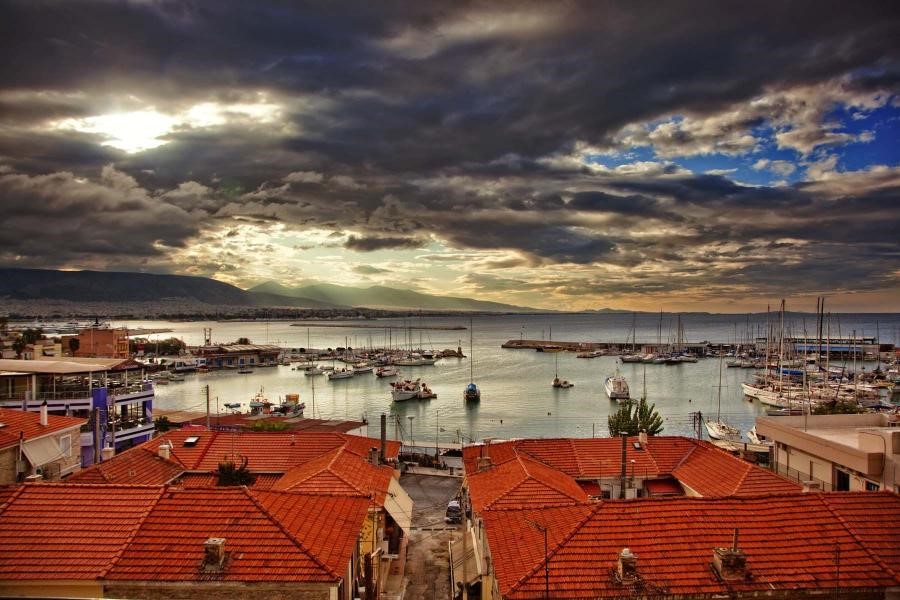
On the hill that rises northwest from Mikrolimano and north from Votsalakia beach, you will find the most beautiful district of Piraeus: The Castella. Walk around and admire the architecture of the neighborhood with mansions of the 19th century. The uphill streets like Irakleous, Falireos, Foskolou and Vasileos Pavlou offer a panoramic view. From the Veakeio Theatre and even higher at the Prophet Elias, the coastline to Vouliagmeni is clearly distinguishable. To the west of the Prophet Elias hill there are the old waterworks of Athens and a grove, while in the south there are traces of fortifications from the archaic period.
At the top of the hill of Castella you will find the church of Prophet Elias and Veakeio theater. It was built based on the design patterns of ancient theaters and it can accommodate 2000 spectators. At the inauguration in June 1969 the opera Nabucco by Verdi was presented by the National Opera. Each summer the Municipality of Piraeus organize here a number of interesting cultural events.
Info
In ancient times the hill of Castella was called Mounichia hill. In the recent past the name Prophet Elias hill prevailed, due to the church which was built on top of it. Because of the tank (deksameni) for the city's water supply another name of Castella was Deksameni district. The hill has an altitude of about 90 meters.
The Churches
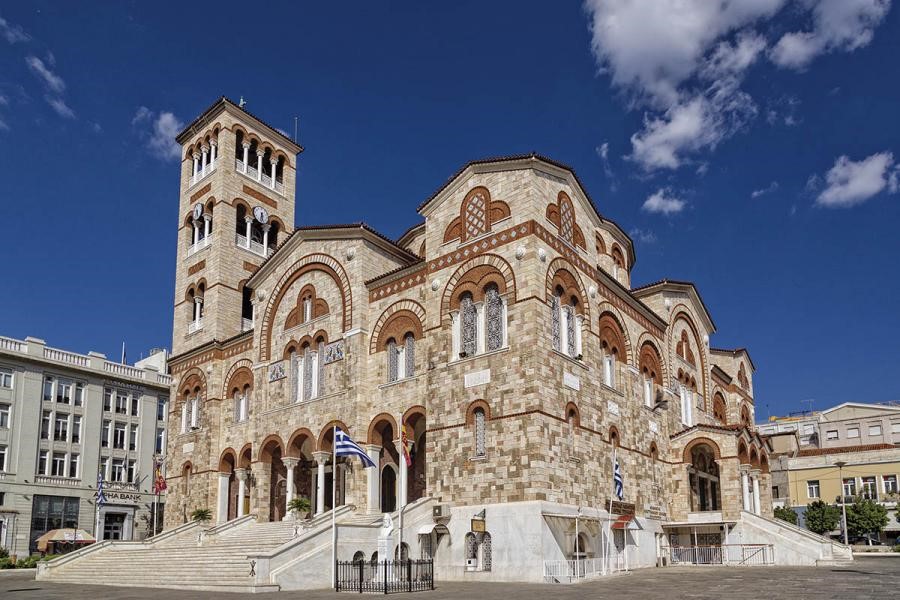
AGIA TRIADA. This is the city’s cathedral and it was built to replace the older church that was bombarded by the Allies, in January 1944. It follows the Byzantine architectural standards, its internal area is of 836 square meters and the dome is supported in 8 vaults and 8 arches. The external doors are made of brass of a particular style and its ornate temple is made of marble. The church was painted by the iconographer St. Almaliotis and his student A. Liakos. It is located on 2 Ethnikis Antistaseos Str. at the junction with Vasileos Georgiou Str.
AGIOS NIKOALOS. The impressive Agios Nikolaos church was built at the end of the 19th century and it is a creation of the same architect who designed the Municipal Theater of Piraeus, Ioannis Lazarimos. It imposes on the area of Customs just across from the Exhibition Centre of the Piraeus Port Authority, on 1 Agiou Nikolaou Str.
PROPHET ELIAS (CASTELLA HILL). The Prophet Elias is well-known for its position on the top of Castella hill. It is a very popular temple for the people of Piraeus concerning wedding ceremonies due to tits excellent location. Previously, in the place where Phophet Elias is located today, there was a chapel which belonged to the Monastery of St. Spyridon and was destroyed by an earthquake. In 1986 it was built in its place the present parish church in Basilica style which was painted by iconographers of Piraeus. The Prophet Elias over the years has given its name to the hill. So do not be surprised if you hear the residents of Piraeus to call Castella as Prophet Elias Hill.
AGIOS SPYRIDON. The church was founded on the ruins of the monastery of Agios Spyridon dated in the 11th century. In April 1827 Georgios Karaiskakis with naval forces of European philhellenes under Lord Cochrane sieged the monastery in which men of Kioutachi Pasha had fortified themselves. Finally, after severe bombardments from land and sea, they managed to occupy it. The present church was built in 1875 under Mayor D. Moutsopoulos, just on the ruins of the destroyed monastery. It is located on 1 Miaouli Coast.
AGIOS PAVLOS CATHOLIC CHURCH. The proposed design of the architect Schaubert was presented on 7 October 1838 and it was accepted with slight modifications. The work began immediately and on 23 October 1838 the foundation stone was laid. The construction of the church that was dedicated to the Apostle Paul was completed in December 1839. On 27 November 1840, an oil painting by Gustavo Frank of the Apostle Paul preaching the Christian faith to the Athenians was placed above the altar. In 1896 the main facade took the form that it has today. A base from big rectangular stones supports four round columns placed on marble bases. The capitals of the columns are of the Corinthian order. In the outmost corners of the facade two bell towers are constructed. In 1971 the church was enlarged. It is located on 23 Philonos Str.
AGIA AIKATERINI. The church in Alexandras square literally hides an incredible story. More specifically, the original chapel was built by an Italian, named Vincenzo Caivano, in honor of his wife Catherine, when she died in 1934. Vincenzo asked the workers to build an underground crypt in the church which began its operation three years later where he placed the relics of his wife in a bronze coffin with glass so her face was visible. Since then the Italian spent endless hours in the crypt crying over his lost Katerina. As it turned out, however, this was not the only cause of his isolation. On the verge of the war between Italy and Greece, the British espionage identified encrypted messages coming from the area where the church was located. With the help of radio direction finders, the Greek authorities discovered that they were emitted from St Catherine and they researched the area of the crypt where they discovered a transmitter –quite high tech for its time! The sad widower was arrested on charges of espionage. His name, however, was kept in the chapel of St Catherine which took the name of St Vincent ...
ΑGIOS VASILEIOS. The original small church was built in 1873 in the then deserted area of Freatida by a municipal clerk, Vasilis Georgakakis, who aspired to become a sexton. Οver the next years large mansions were built around the church. After the death of Georgakakis, the Municipality decided in 1899 to replace the small church with a much bigger and impressive church in Byzantine style which would stand on top of the hill. The inauguration took place in November 1909, nine years since its construction began, and after the church went through various misadventures and economic hurdles...
CHURCH OF AG. KONSTANTINOS & ELENI. It is located in Korai Square and it was founded upon plans of John Lazarimos (who is also responsible for the Municipal Theatre of Piraeus and other notable buildings in the city), in July 1878. It is considered one of the largest in Piraeus. In 1934 the first night school classes in the city began inside the church, and the cathedral of Piraeus was created when Agia Triada was destroyed from the bombings of January 1944.
AGIA PARASKEVI KALLIPOLEOS. It was launched in October 1940, in the region of Nea Kallipoli and in 1946 the later Archbishop and president of the Cypriot Democracy, Makarios, performed his duties here. St Paraskevi, the original building of which is connected with refugees who came from the area of Bithynia, at the Sea of Marmara, owns the chapel of St Sozon in Piraeus Peninsula. Facing the sea, it is located next to the court of Porfyras. St Sozon is the patron of sailors from the island of Limnos and he is celebrated on September 7.
Electric Railway Station
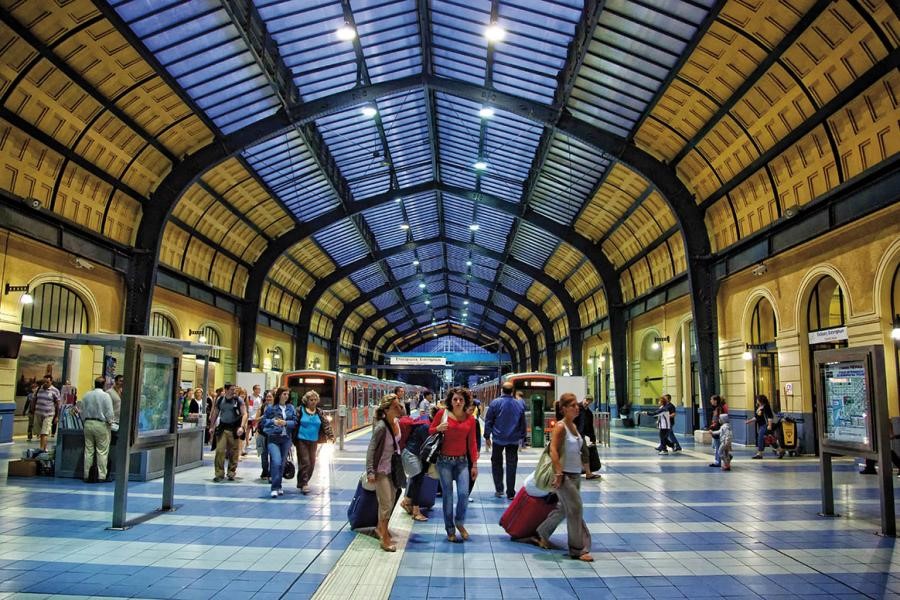
The Piraeus-Athens Electric Railway Station was constructed around 1926-1929 by the architect Ioannis Axelos, replacing the existing station. Its magnificent, eclecticist structure was a creative adaptation of European models to the Greek conditions of the time. This is a metallic, riveted, articulated structure with a transparent roof. Successive frames are held together by horizontal interlinked beams, ensuring their solidity with diagonal wind breaks, while at the same time holding transparent panes of glass. Its main feature is its large domed hall. Initially steam trains connected Athens to its port, Piraeus. The line from Athens to Piraeus was inaugurated on February 27, 1869. Today, besides an attraction, it is one of the most crowded train stations, as thousands of people use it to commute to and from Athens and Kifissia.
Info
It is located on 1 Odissou Square.
Hellenic Naval Academy
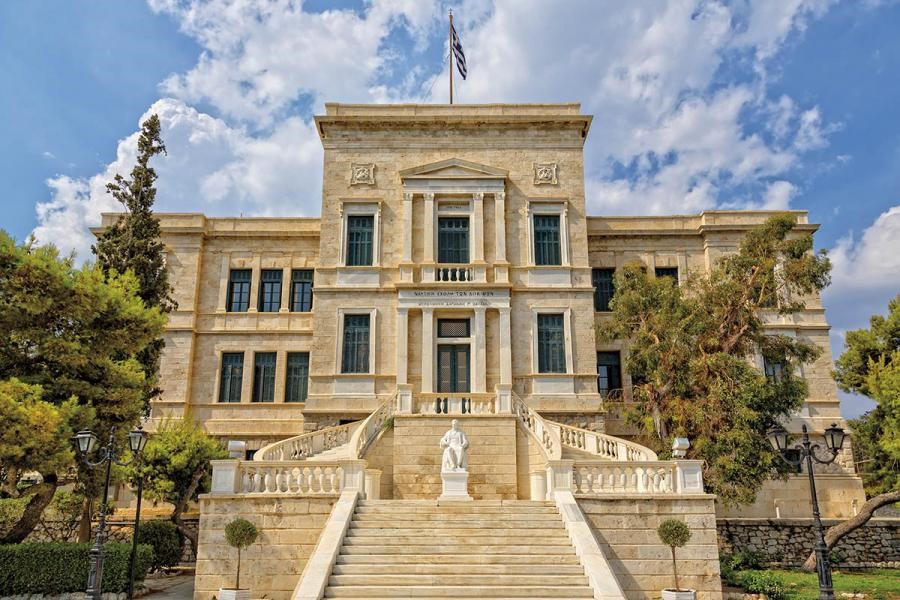
The Hellenic Naval Academy was constructed in Piraeus with a bequest provided by the national benefactor P. Vassanis and it was completed in 1904 to house the School of Naval Officers for the Hellenic Navy, which until then it operated unofficially in the battleship with the name “Hellas”. It is an architectural jewel of the city of Piraeus, designed by Ernst Ziller. Since its establishment until today, the Naval Academy educates officers for the Hellenic Navy and it is considered one of the best military schools.
Info
It is located in Freatida, at the end of Chatzikiriakou Str.
Ancient Walls
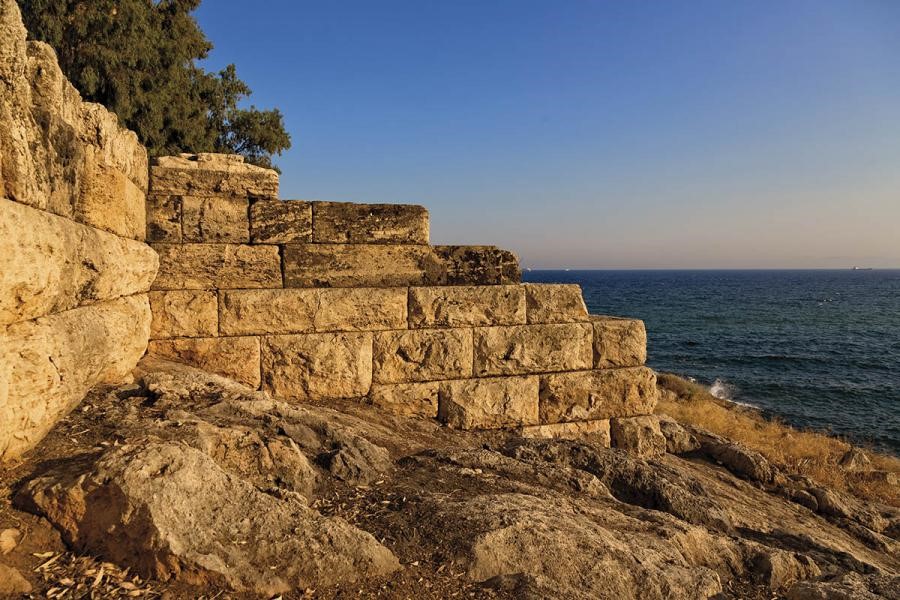
The walls and gates of ancient Piraeus. Themistocles in 493 BC started to build the fortification around Piraeus. The two main gates of the fortification are at the entrance to the modern town on Triakostou Tetartou Syntagmatos street. The Asty Gate is the westernmost gate enclosed by Pylis-Omiridou Skylitsi and Kolokotroni streets. The main carriage road to Athens passed through the Asty Gate. The ruins of the fortifications are well preserved nowadays.
The Long Walls and the Middle Gate. The purpose of the construction of the Long Walls was to Link Athens with its harbor. The Long Walls (northern, Phaleric and the middle or southern wall) created a secure corridor between Athens and Piraeus for the population of Attica during Peloponessian war. The Middle Gate near Asty Gate is very similar to the Dipylon Gate in Athens but smaller. It is constructed for traffic using the corridor of the Long Walls. The Eetioneia Gate is situated at the north side of the main harbor, Kantharos, at Drapetsona area. The fortress of Eetioneiawas constructed in order to control the harbor. Two sections of wall start from this gate. The first runs east towards the harbor. The second runs towards the outer harbor. Two round strong towers of the Hellenistic era flanked the gate. The wall is protected by a deep moat dug into the rock.
The coastal section of the fortification. It was built by Conon in 394 BC and is today preserved for a length of 2,5 km along the Piraeus Peninsula. Many of the towers of the wall are preserved nowadays.
Peace & Frienship Stadium Marina
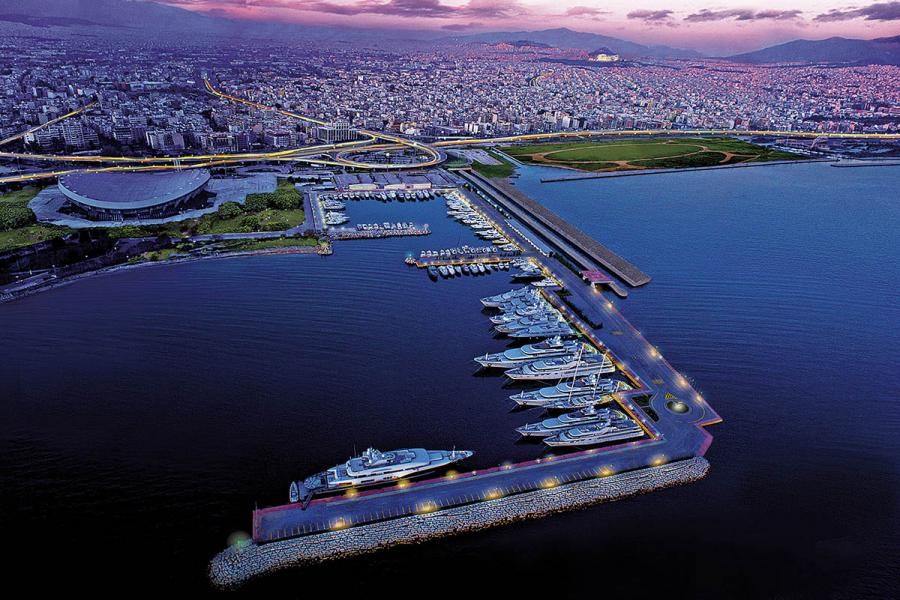
Ιt was founded in June 2004, to accommodate the yachts of VIP visitors to the 2004 Olympic Games. The marina has a mooring capacity of 130 yachts and can accommodate yachts up to 130m, with over 10 berths for mega yachts of 50m up to 100m and over 25 new berths for super yachts of 30m to 35m. Athens Marina has a large seafront entrance for easy access, along with tender pilot assistance and a unique dock for alongside berthing.
+30 210 4853200
www.athens-marina.com
Piraeus Peninsula
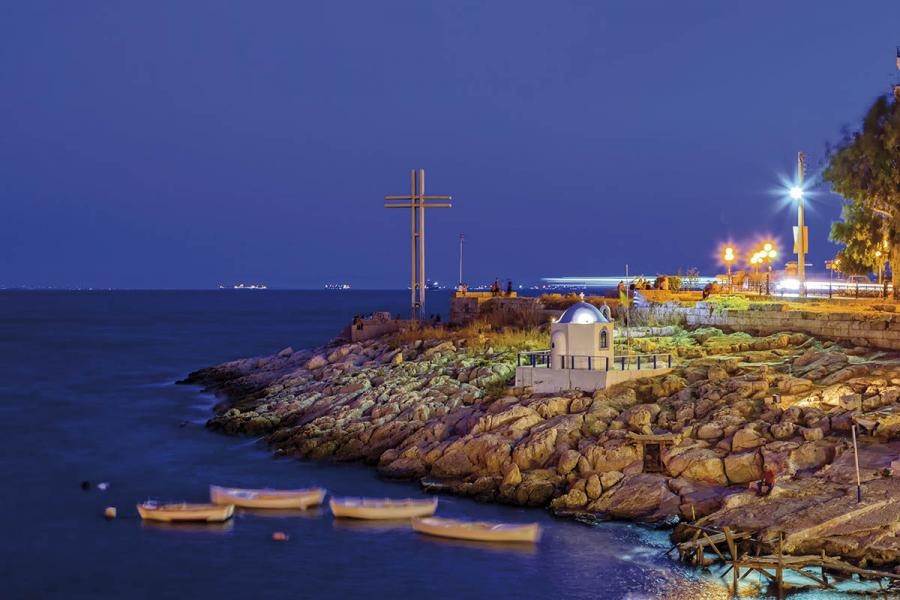
Piraeus Peninsula, in the east side of the central port, is one of its most vivid and famous areas, ideal for recreation and strolling. In the Peninsula there are three coves. The first is called Skafaki, the second Baikoutsis’s and the third one Venus (Aphrodite) or Palaska. At the last one, in Venus bay with the chapel of Agios Nikolaos that looks like a windmill, the boats of the Amateur Fishing Club of Piraeus moor. The Piraeus Peninsula, following the extensive landscaping works that took place in the period 1983-86, acquired sidewalks, railings, places with greenery and benches. The area is full of taverns and ouzeri and attracts people from Piraeus, Athens as well as foreign visitors. Should you come late in the evening, you will enjoy amazing images of the sun setting in the sea.
The Piraeus Peninsula consists mainly of a porous limestone, in the color of ocher, which has the characteristic of being easily carved, “soft”. It is the famous aktitis stone which the ancient Athenians took from here and it was particularly easy to be processed. It is a kind of limestone, namely marly limestone. The ancient wall of Piraeus had been built by this stone and many other works of antiquity -scattered monuments of this material are found throughout Attica. Today the coastal road that connects Piraeus with Freatida is called Themistocles coast in honor of the great statesman and general who fortified Piraeus and defeated the Persians at Salamis in the 5th century B.C. However, the ruins of the ancient walls alongside the coast, are of the walls that were built a century later by Conon.
Archaeological Museum
https://www.piraeus.org/museum.html
Electric Railway Museum of Piraeus
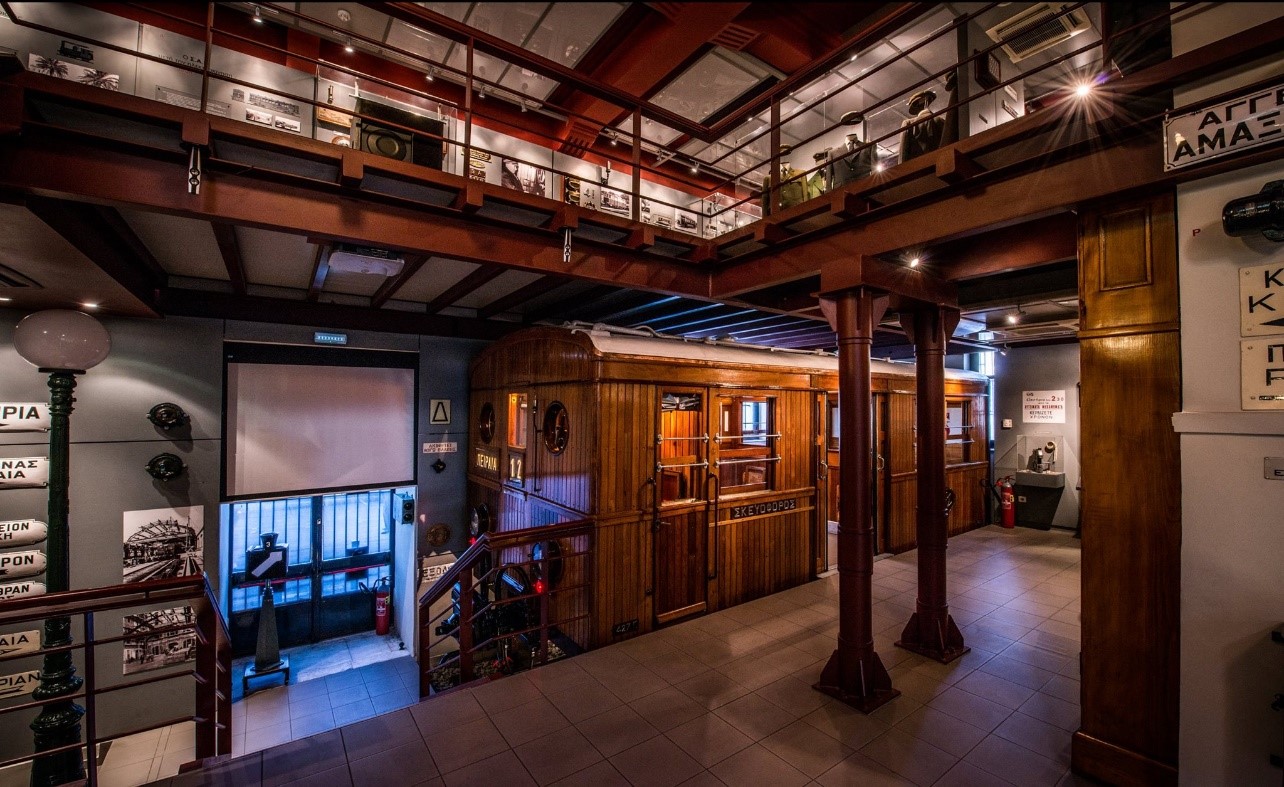
https://www.museum-synt-isap.gr/en/
The Lion of Piraeus
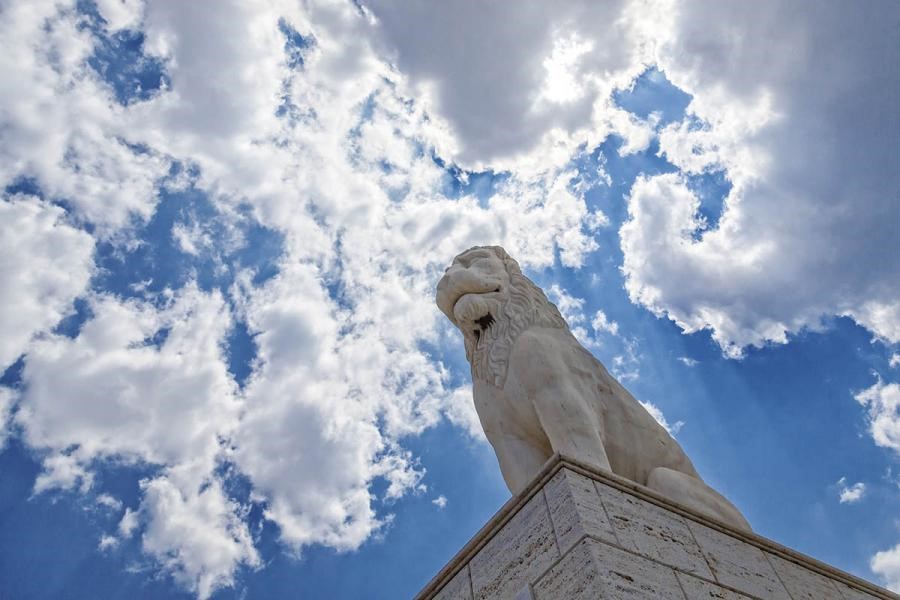
The lion that stands today at the end of Xaveriou coast looking at the main port of Piraeus, is a true copy of an older marble statue. The original which was stolen stood for centuries in a prominent position at the port and it was the reason why Piraeus was called Porto Leone by the Latins and Aslan Port by the Ottomans. Bear in mind that Aslan port means in Turkish port of lions. Archaeologists have not come to the construction date of the original lion, but it is very similar to the trophy set up by Macedonians, in Chaeronea. Into the shoulders and flanks of the lion there are runic inscriptions for which there is no specific information. It is said that they were carved by the Varangians, ie Scandinavian soldiers, who found themselves in Piraeus in 1018 by following the Byzantine emperor Vasilios B’ Voulgaroktonos. The statue was looted by the Venetian naval commander Francisco Morozini, in 1687
For more information visit https://www.destinationpiraeus.com/index.php/page/25




